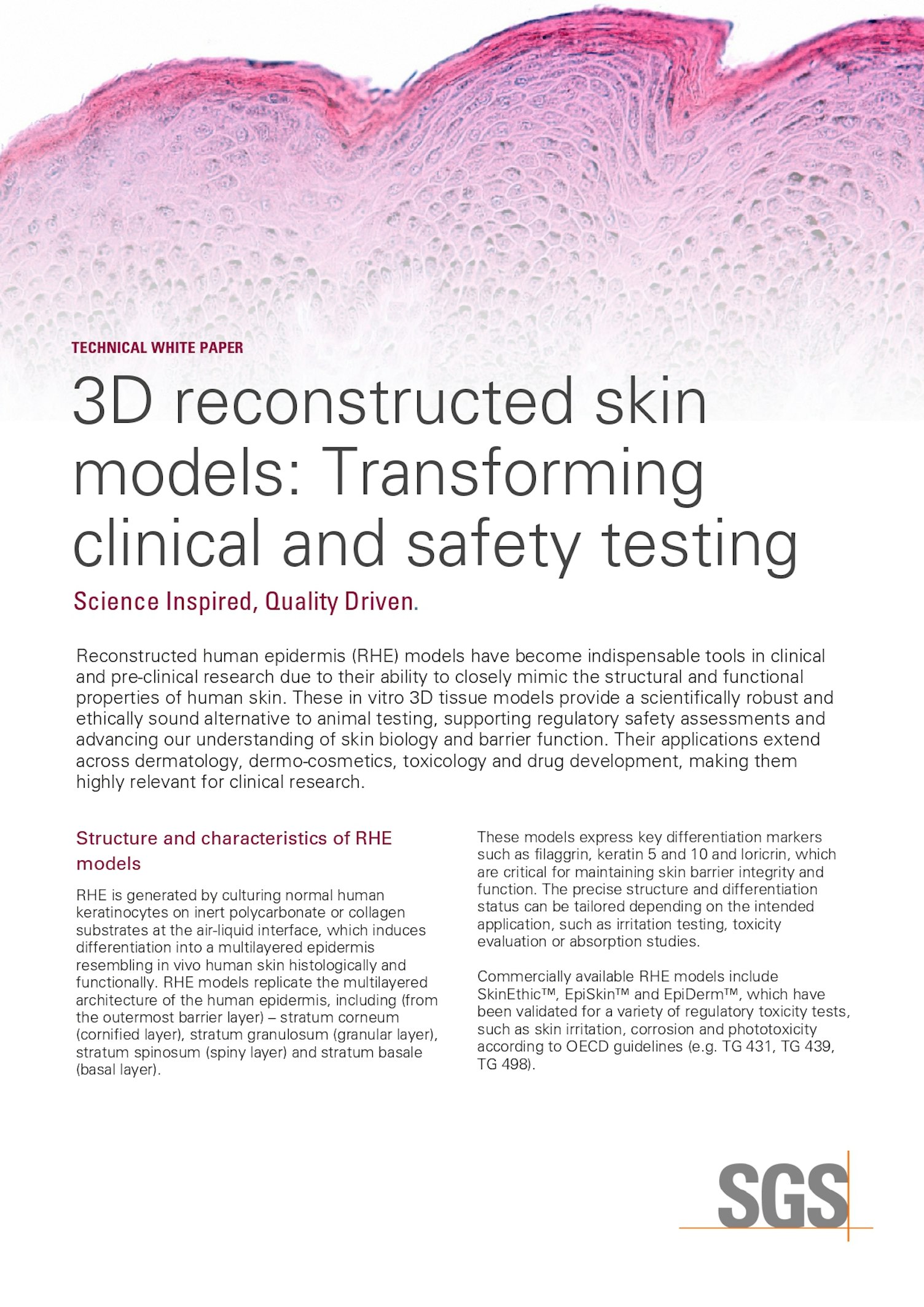As clinical and dermatological research continues to evolve, 3D reconstructed tissue models, such as reconstructed human epidermis (RHE) and mucosal epithelium, are reshaping the way efficacy and safety are evaluated. These advanced in vitro systems closely replicate human biology, offering reliable, reproducible and ethically preferable alternatives to animal testing. Their applications span from irritation and corrosion testing to drug absorption and disease modeling. However, the full value of these models depends on rigorous validation and a clear understanding of their scope and limitations.
This white paper examines the expanding role of 3D skin and epithelial models, the shift toward human-relevant and non-animal approaches and how standardized protocols can support confident, science-driven decisions in product development and regulatory pathways.

What you'll find in our white paper
- The evolution of 3D skin and epithelium modelsDiscover how RHE and epithelium models are advancing clinical research by providing reliable, human-relevant alternatives to animal testing
- Applications across dermatology and drug developmentLearn how these models are used in irritation testing, neonatal skin assessment, disease modeling and drug absorption studies – improving safety, efficiency and ethical standards
- Model validation and regulatory relevanceUnderstand how standardized testing protocols ensure reproducibility and regulatory acceptance across multiple sectors
- Maximizing scientific confidence through robust methodologiesExplore how a multiparametric testing approach enhances data quality, supports product claims and fosters innovation in dermo-cosmetic and pharmaceutical development